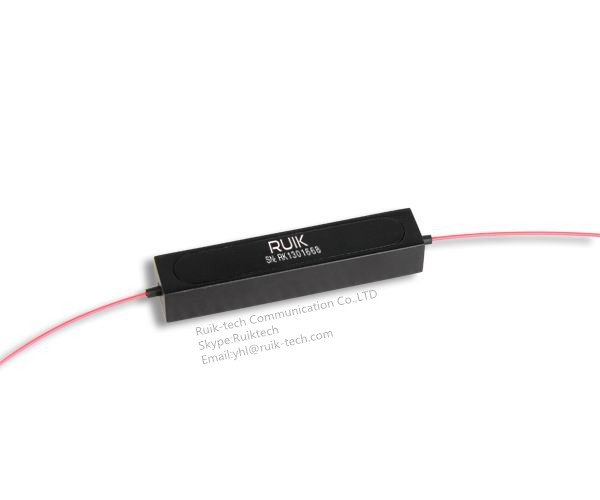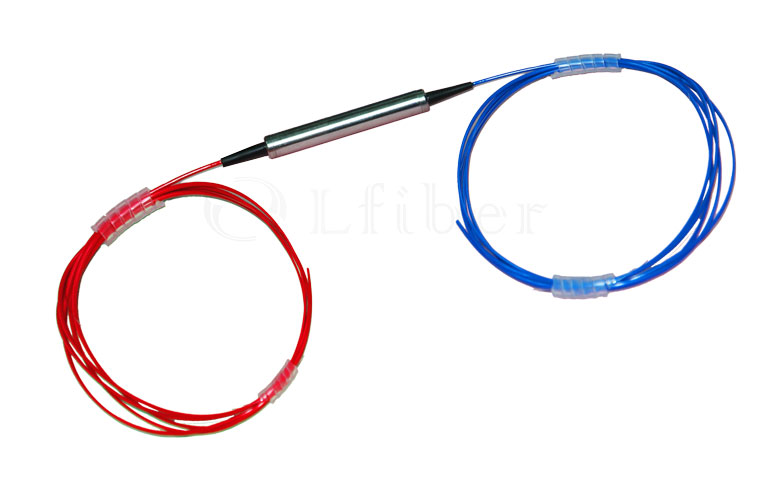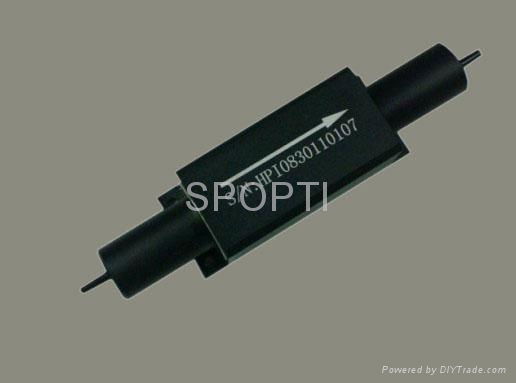


Light coupled into port 1 is split into TE and TM polarization at the first PBS ( Figure 2a). The circulator consists of two PBSs, that transmit TE polarized light and reflect TM polarized light in a 90° angle, two - 45° Faraday rotators and two HWPs with an optical axis of 22.5°, all connected via polymer waveguides. The schematic layout of the circulator is depicted in Figure 1.
#POLARIZATION INDEPENDENT OPTICAL ISOLATOR FREE#
Since the Faraday rotators are magneto optic bulk crystals, collimating optics in form of graded index (GRIN) lenses are required to construct a free beam section. The circulator consists of passive polymer-based embedded single mode waveguides with etched slots in order to insert the aforementioned optical functionalities. In this work, we propose and demonstrate a polarization independent circulator based on the hybrid integration of Faraday rotators, half wave plates (HWPs) and polarization beam splitters (PBSs) into a polymer integration platform.

However, circulators in sensing systems are still based on free-space optics, since they show better performance in terms of insertion loss and optical isolation. An integrated polarization independent optical circulator based on a Mach Zehnder interferometer has already been demonstrated by Sugimoto et al. Since standard optical single mode fibers create random polarization rotations, polarization independent operation of optical circulators is required for fiber-based applications. for separation of up- and downstream signals in bidirectional optical transceivers. They are widely used whenever bidirectional operation along optical fibers is required, for example in sensing applications like optical coherence tomography (OCT), but also in telecommunications e.g. Optical circulators are three or more port optical components that allow light circulation between specific ports while simultaneously optically isolating other input ports. This enables optical switching between ports in form of a latching switch, which maintains its state after removing the external magnetic field. By applying an external magnetic field opposite to the magnetization of the faraday rotators, it is possible to repole the magneto-optic material, leading to reversely circulating light inside the device. For a first demonstrator, on-chip losses down to 5 dB and optical isolations up to 24 dB were measured, depending on the different input and output constellations, as well as the polarization. Crystalline, pre-magnetized bulk Faraday rotators (FRs) and half-wave plates (HWPs) are inserted into free-space sections, formed by pairs of waveguide butt-coupled GRIN lenses. The circulator consists of polymer waveguides and two thin-film polarization beam splitters (PBSs) inserted into waveguides via etched slots. In this work, we experimentally demonstrate a four-port polarization independent optical circulator on a polymer-based hybrid integration platform. Therefore, they are important building blocks in integrated optics, which promises further miniaturization and cost reduction of optical elements for telecom, datacom, and sensing applications. Nonreciprocal optical functionalities like optical isolators and circulators are key components for the suppression of unwanted optical feedback in lasers and are also widely used for light routing in fiber-based measurement systems such as optical coherence tomography.


 0 kommentar(er)
0 kommentar(er)
